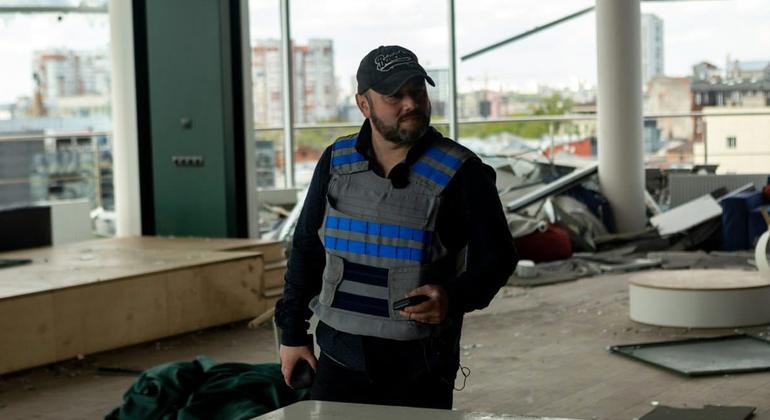Speaking with UN News one hour after fierce shelling sparked fires across the city, Mr. Rosenfeld said his “Kharkiv is a frontier city” concept is now being sketched out amid the rubble.
“Seeing the whole city from the panoramic windows and the smoke from the fire, you understand that our city is proud of itself, feels smart, educated, knows its worth,” said Mr. Rosenfeld, who was born and raised in Kharkiv.
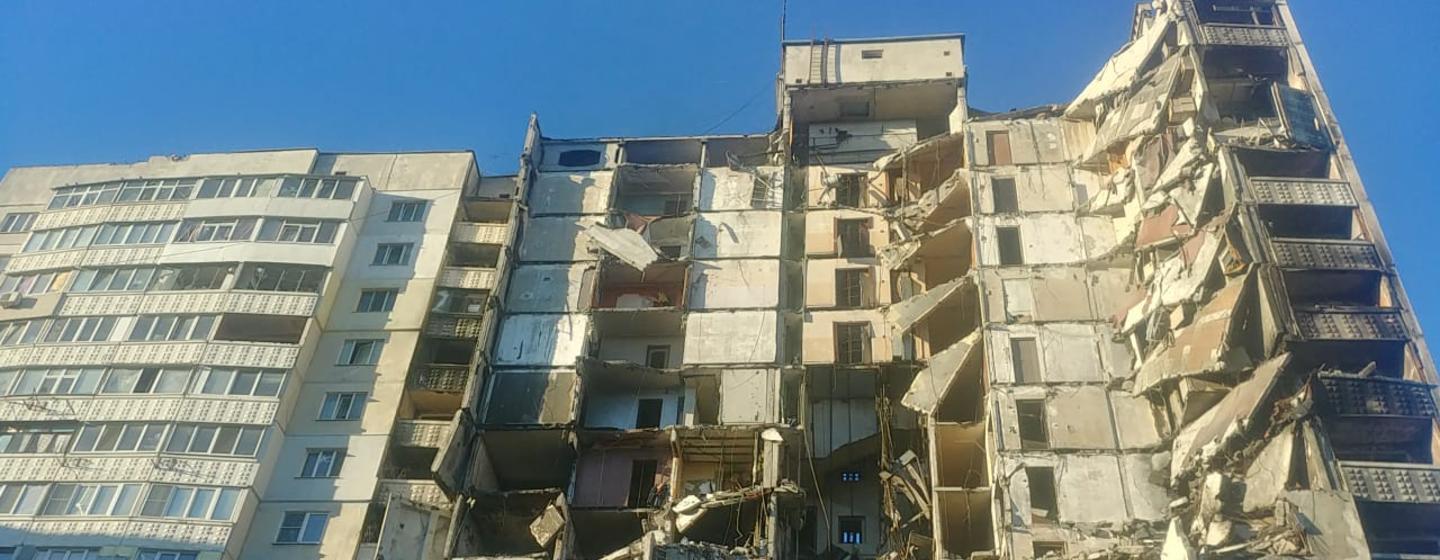
Ruined buildings in Kharkiv.
The master plan is now unfurling, developed on a voluntary basis by the Norman Foster Foundation together with a group of local architects and urban planners as well as with the Advisory Council of International Experts.
Supported by the UN Economic Commission for Europe (UNECE) through a pilot project, the newly created UN4Kharkiv task force has united 16 UN agencies and international organizations, with Mr. Rosenfeld volunteering as a local specialist.
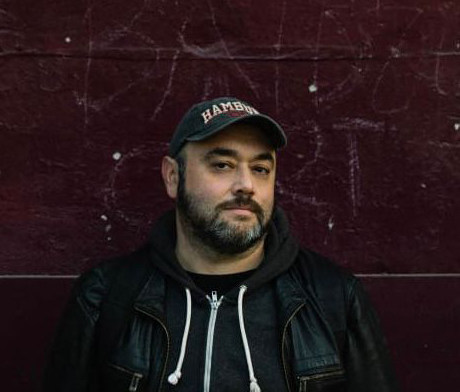
Maxim Rosenfeld, an architect from Kharkiv.
Ever-changing dynamics amid war
“It is impossible to understand what is happening here from a distance,” he explained. “It is difficult to understand even from the inside because the situation is dynamic. It changes all the time. We make an appointment for a Zoom meeting, and then there is nightly shelling. When we come to the issue of, say, energy security, the situation has completely changed.”
He said he is “in love” with his city, makes films about it, and can talk about its history and people for hours. Since the beginning of the war, when Kharkiv began to be systematically shelled, many have moved to other parts of Ukraine or gone abroad, but he said he never thought about leaving.
The total damage caused to Ukraine’s housing sector since Russia’s invasion is estimated at more than $50 billion. According to the City Council of Kharkiv, Ukraine’s second largest city, 3,367 apartment buildings and 1,823 single-family houses have been destroyed, along with urban infrastructure.

The streets of Kharkiv in 2023.
Ukrainian ‘Wild West’
The frontier city is the “Ukrainian Wild West”, Mr. Rosenfeld said, referring to its mid-17th century beginnings.
“People who came here were ready to take risks in order to take advantage of the opportunities that were opening up,” he said, providing a snapshot of its rich history, from its changing character in the early 19th century once a university was built to its early 20th century role as the capital of Soviet Ukraine.
“I have always believed that we have a lot in common with Berlin,” he said. “Now I do not compare Kharkiv with anything. It’s unique. To understand it, you must come and live here.”
The multicultural, multinational city is a melting pot, with students from Africa to Asia studying and living together, he said, adding that Kharkiv’s frontier characteristics “are in its genetic code”.
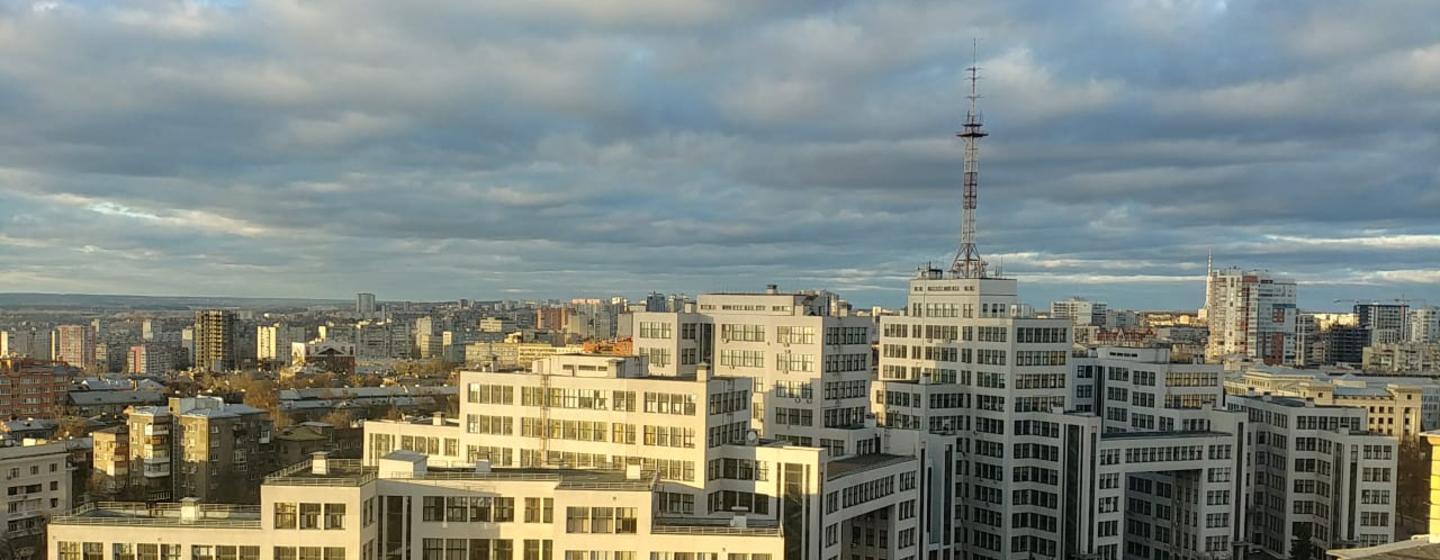
The city centre of Kharkiv.
Kharkiv dreams: Stop the bombing
The population of Kharkiv was invited to take part in a survey focused on reconstructing the city, but many had fled the daily attacks and those remaining at that time dreamed of one thing: for the bombing to stop, Mr. Rosenfeld said.
Their voices were heard, he said. Noting that bomb shelters built in Soviet Kharkov nearly a century ago were rebuilt to tackle new realities, he said only one of 11 current proposals from architects and engineers contain a security framework.
“Today, a ‘modern’ bomb shelter is an underground factory, underground universities, and event centres, which should be dual-use facilities,” Mr. Rosenfeld said.
Cultural life is back
Since 2022, despite constant shelling over the past month and a half, “a huge number of people” have returned to Kharkiv, and cultural life has resumed in the city, Mr. Rosenfeld said.
“We recently attended an amazing performance based on a play written two months ago on current events,” the architect said, noting that a jazz festival are in the works.
Despite air raid sirens, the shows go on, he said.
Indeed, the concept of the future of Kharkiv was born to the sounds of an air raid siren, Mr. Rosenfeld recalled, adding that despite current conditions, he and many of his colleagues feel “happy” to be working on the project.
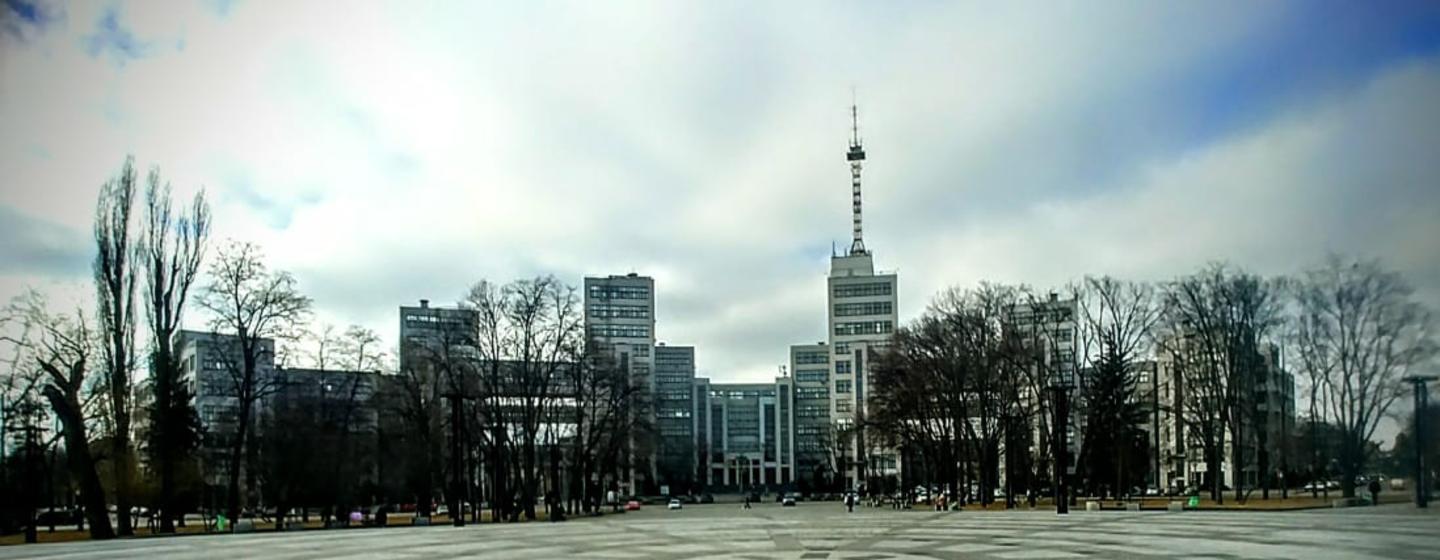
The city centre of Kharkiv.
‘Do the right thing’
“Maybe for some, it sounds terrible, but at this moment you understand that you are doing a very important and necessary thing,” he said. “You want to be needed.”
After the start of the war, many people in Kharkiv, like doctors and volunteers, who understood that they are needed and useful, he said.
“They don’t do it out of vanity; they just do the right thing,” he said. “Doing what I do gives me a colossal sense of happiness. Our work with the UN is real, making the most of our abilities, talents, knowledge, and skills. Yes, it has to do with such a tragedy, but you’re happy because you’re not vegetating. You’re living.”

